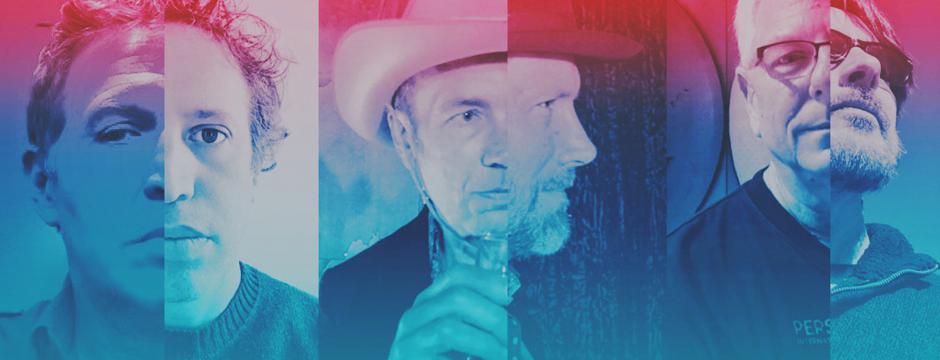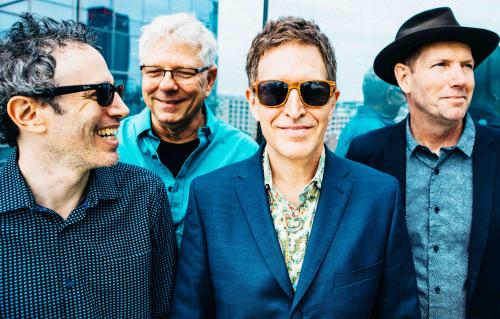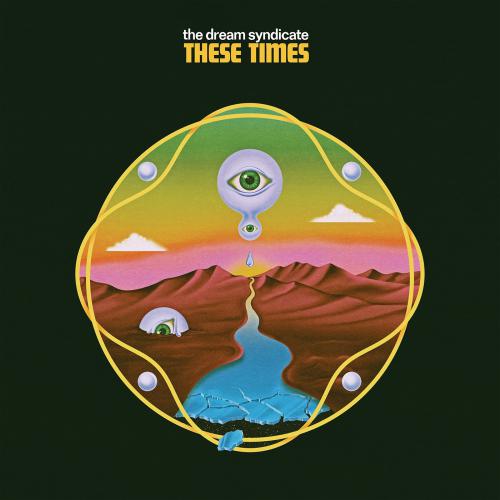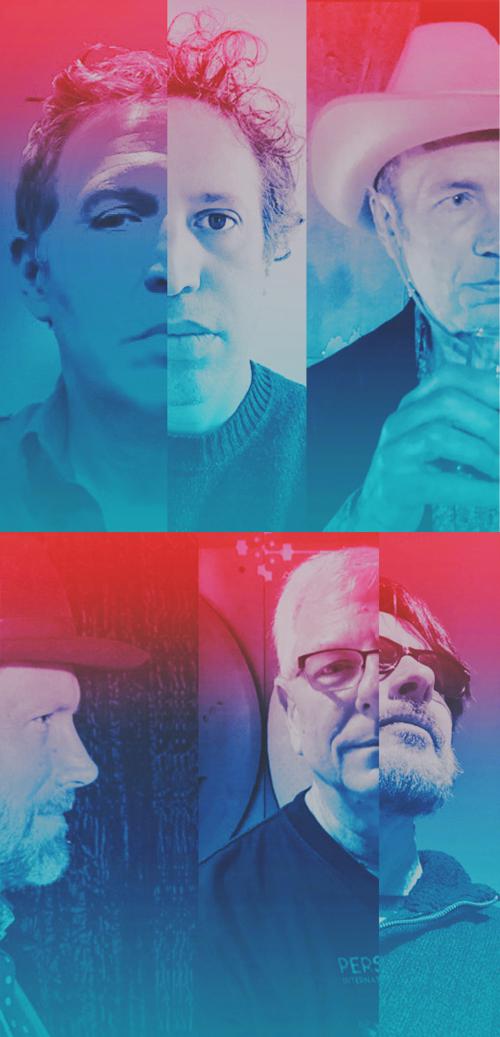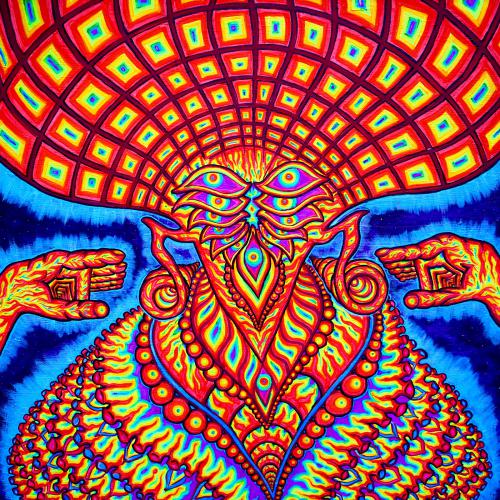Band: The Dream Syndicate
Album: The Universe Inside
VÖ: 10.04.2020
Label/Vertrieb: ANTI-/ Indigo
Website: http://www.thedreamsyndicate.com/
When the Dream Syndicate emerged in the early 80s, frontman Steve Wynn declared that “we’re playing music we want to hear because nobody else is doing it” –he added,“I’ll comprise on what I eat or where Isleep, but I won’t compromise on what music I play.”
Both were true, and although their template of Velvet Underground meets Crazy Horse may seem commonplace today (and let’s not forget, the Syndicate spawned manyimitators), their raw twin guitar, bass and drums approach was not common during an era when slick polished MTV bands ruled. Thebandwere uncompromising. But before MTV switchedto reality shows, they were no more.
That uncompromising ‘tude continues on April 10th,2020 whenAnti releases the band’s 7th album, The Universe Inside.
After 23years,they remergedin 2012with a slight change in lineup-guitarist Jason Victor replaced Paul B. Cutler-and after a blaze of touring, they recorded their first album in decades, How Did I Find Myself Here?
The album was surprisingly fresh (the addition of former Green on Red keyboardist Chris Cacavas provided lush textures previously unknown in their guitar-based music) and more surprising was a vocal cameo from co-founding member, the long-lost chanteuse Kendra Smith.
More touring (joined by now official member Cacavas) followed quickly by another album These Times–which refined the sonic landscapes explored on How Did I Find Myself Here?
This band is not regurgitatingold albums and previous glories, but developing with the same urgency that a pack of youngsters would.
Which brings us to The Universe Inside.Every press release ever written will claim “this is new and different” –well, damn it, it is! Just look at the song lengths:20:27, 7:36, 8:56, 9:55 and 10:53. Ok, sure –the Syndicate have occasionally committed a long song to vinyl, “John Coltrane Stereo Blues”was 9 minutes with live versionsover the ten-minute mark.
However, when one thinks of the Dream Syndicate, it’s not just the wild abandon with which singer/guitarist Wynn, drummer Dennis Duck, bassist Mark Walton, and lead guitarist Jason Victor perform–it’s the carefully constructed songwriting of Wynn that comes to mind.By now every rock critic in the country has predetermined who he or she feels Wynn reminds them of and what they think of that style of songs. This time, don’t!
For the first time, every song is a group song writing effort. What seeps in are Dennis Duck’s knowledge of European avantgarde music (let’s not forget Duck named the band The Dream Syndicate in tribute to an obscure 1973 Krautrock album), Jason Victor’s passion for 70s prog, Mark Walton’s experience in Southern-fried music collectives and Wynn’slove of vintage electric jazz. The dazzling display of album cover artwork alone should clueyou into the changes. But don’t take our word for it. Dive in!
“The Regulator” kicks in instantly. Like 70s Miles Davis chaotic brilliance,it starts all fired up, and over of the course of 20 minutes of eastern droning electric sitar (played by the Syndicate’s pal Stephen McCarthy of The Long Ryders!), deep funky bass, haunting vocals, and saxophone flourishes by guest Marcus Tenney (a member of all-instrumental progressive ensemble Butcher Brown –based in Richmond, VA) -I'm ready to run through the streets at dawn, naked, proclaiming its very genius!
When I confront Wynn about the intensity of this song, he tells me:
“The Regulator” is a microcosm of the entire record -It was just a formless, trippy mass as we all started playing together.There was an early 70’s drum machine—a Maestro Rhythm King, the same model used on “There’s A Riot Goin’ On”—with Dennis locking in and setting the pace.Stephen grabbed an electric sitar because it was the first thing he saw. Jason and I were kicking pedals on like lab monkeys in a laboratory and Mark was a lightning rod, uniting all of those elements into one tough groove. I collected a list of random, unconnected lyric ideas that I kept on my phone.I tried them all out in random order in my home studio just to see how they would feeland that one-take test run is the vocal you hear!. There’s just so much lightning-in-a-jar, first take excitement on this record.
“The Longing” isexactly the sort of longer, moodier psychedelic type of thing I was hoping to hear on the Syndicate’s comeback album, How Did I Find Myself Here when I caught wind of keyboardist Chris Cacavas joining the band.
“Dusting Off The Rust” will remind you of every German 70s prog band you ever loved. While Marcus Tenney’s sax & trumpet playing gives it the flavor of British fusion bands of the same era (Soft Machine) –and percussionist Johnny Hott (of Richmond VA’s late great House of Freaks) adds an Airto vibe. Truly international head music!
“Apropos of Nothing” is Musique concrète meets Miles Davis’ On the Corner.
Dedicated fans who heard the band’s first ever self-released EP will recognize the phrase “I can hear those bells again” –as the song “The Slowest Rendition” progresses, it feels like vintage Roxy Music; sultry andprogressive. It’s a two-part epic about the deterioration and rebuilding of the mind, based on Wynn’s shocked reaction to the aftermath of a close friend’s stroke.
I notice the vocal melody is reminiscent of Bryan Ferry and Steve says: “I’m such a big fan of Roxy Music.They were my favorite band when I was in my teens, I can hear their influence on “The Longing,” the way a silky, desperate, melancholy and romantic reverie decays and devolves into noise and chaos.To me it feels like something off “For Your Pleasure” where the ending takes longer than the song itself.We were obviously taking our sweet time getting from point A to point B, something that bands—or people in general—don’t allow themselves to do often enough these days.”
This album could have been called The Art of The Improvisers –they were in a Richmond studio after midnight working out ideas when Stephen McCarthy dropped by and became a catalyst for uncharted exploration–in one session, they recorded 80 continuous minutes of soundscapes. Wynn took thatraw tape back to his NYC home and played the shit of itand thought, “my god, there’s an album here, damn it!” Like producers Teo Macero and Conny Plank did back in the day, he hauled ass back to Virginia and edited and sculpted those 80 minutes into an album. Steve told me,"All we added was air" which is to say aside from vocals, horns and a touch of percussion –every instrument is live as it happened.
Is this the best Dream Syndicate album they’ve made? Believe me, it’s the most dangerous!
Infos zum voherigen Album:
Band: The Dream Syndicate
Album: These Times
VÖ: 03.05.2019
Label: ANTI- / Indigo
Website: http://www.thedreamsyndicate.com/
"This band shows it can look back without being beholden to the past" - All Music
"There's a muscle and rigor to the songwriting that you don't often hear from psych-rock bands today." – Stereogum
"Atmospheric rock music veering between noise and subtlety -- so compelling ... a hopeful new chapter." - Pitchfork
Los Angeles’s The Dream Syndicate is thrilled to announce These Times, their second album of new music since their 2012 reunion nearly thirty years after they first influenced California’s Paisely Underground scene. These Times will be released on May 3rd, via ANTI- Records.
“When I was writing the songs for the new album I was pretty obsessed with Donuts by J-Dilla,” lead singer and songwriter Steve Wynn explained. “I loved the way that he approached record making as a DJ, a crate-digger, a music fan wanting to lay out all of his favorite music, twist and turn the results until he made them into his own. I was messing around with step sequencers, drum machines, loops—anything to take me out of my usual way of writing and try to feel as though I was working on a compilation rather than ‘more of the same’. You might not automatically put The Dream Syndicate and J-Dilla in the same sentence, but I hear that album when I hear our new one.”
If 2017’s How Did I Find Myself Here was a 10 pm record, all swagger and cathartic explosion, then These Times is the 2 am sibling, moodier and more mercurial with the band acting as DJs of their own overnight radio station as the listener drifts off into dreams and wonders the next morning if any of it was real.
The Dream Syndicate recorded These Times once again at Montrose Studios in Richmond, Virginia. Co-produced by John Agnello (Phosphorescent, Waxahatchee, Hold Steady, Dinosaur Jr.), Wynn wrote all of the song’s lyrics in the studio after the band finished tracking, so that the words would be dictated by the sound rather than the other way around. This process contributed to the urgency of the album’s title.
“These Times. That’s it. It is all we’re talking about, all we’re thinking about. There is no avoiding the existential panic of a world that’s hurtling somewhere quickly, evolving, and shifting course by the hour. It seems like a lie to not address or reflect the things that we can’t stop thinking about—the whole world’s watching indeed. The lyrics are just a mirror of the dread, panic, mania, speculation, melancholy and ultimately shrugging abandonment that just might follow. It’s just all about where we are.”
The Dream Syndicate has a long and storied history. But where are they right now? They’re here. Right here. In These Times.
Infos zum vorherigen Album:
Band: The Dream Syndicate
Album: How Did I Find Myself Here?
VÖ: 08.09.2017
Label: ANTI- / Indigo
Website: www.thedreamsyndicate.com/
Like a lot of bands and other incendiary devices, the Dream Syndicate began in a basement.
In the final days of 1981, Dennis Duck, known in the LA scene as the drummer of post-punk stalwarts Human Hands, met up in Los Angeles for a subterranean rehearsal with Steve Wynn (guitar, vocals), Karl Precoda (guitar) and Kendra Smith (bass), three scruffy and noisy kids of no particular renown. Despite mostly consisting of long jams on CCR’s version of “Susie Q” and a few embryonic Wynn compositions, the rehearsal left the quartet feeling they were on to something that, if nothing else, was the sound they had been seeking and most certainly not finding on the local scene.
That sound was long songs of feedback and drone and psychedelic rave ups centered around cheap guitars plugged into broken amps. Guitars! Long Songs! Psychedelic garage music (well, basement, technically)—not things that were in fashion at that moment of time.
“We fully expected to be hated,” said Wynn. “But we also figured that if we liked this music as much as we did that somebody else would have to feel the same. We set out to be a band that could be somebody’s favorite band—even if for only a handful of people. Love us or hate us—that was our gauntlet at first.”
But that gauntlet was met by more people and more quickly than expected. Within 3 weeks the band recorded a four-song demo tape for $100 that ended up being their first record, a self-released EP on Wynn’s Down There Records label. The record immediately got press locally and nationwide, airplay on Rodney Bingenheimer’s “Rodney On The Roq” program and other similarly outlier stations across the country, hitting various indie charts along the way. It was only a matter of months before they were offered a record deal by Slash Records to make a debut album for the label’s Ruby imprint. Nine months after that basement jam session, the band was labelmates with the likes of X, The Blasters and The Germs.
That debut record, “The Days of Wine and Roses” was recorded in three consecutive midnight-to-8am sessions—“because the rates were cheaper during the graveyard shift,” Wynn states. “We would finish in the morning and go straight to our day jobs and then go right back to the studio.” Fueled by adrenaline, junk food and the knowledge that they were making the record they’d always wanted to make, The Dream Syndicate made an album that continues to make all-time Best Album lists and influence bands to this day.
A lengthy US tour followed in early 1983, the band finding themselves welcomed as outsider heroes by fans who had also been looking for something else, that something that the Dream Syndicate had imagined in that first basement session. It felt somehow gratifying, startling and inevitable all at the same time. The band came home, wide-eyed conquering heroes but only a few weeks later, Kendra Smith left the band to concentrate on a new project, Opal (which later became Mazzy Star) that she started with David Roback.
Smith was replaced by Dave Provost on bass just before the band left for a three-week cross-country tour with U2 who were exploding with their breakout “War” album. The chance to play much larger venues to many more people put the band in the spotlight and a bidding war ensued with the band signing to A&M Records in the summer of 1983 and going into San Francisco’s Automat Studios with Sandy Pearlman (Blue Oyster Cult, The Clash) a few months later to record their second album, “Medicine Show.” This one took a little longer—five months to be exact. There are enough stories to fill a few books on that session but the album that came out in May of 1984 showed the band in a new, expansive light and got great reviews on both sides of the Atlantic.
Dave Provost left the band and was replaced by Mark Walton, a local bass guitarist and acquaintance of Precoda’s. An eight-week tour with REM followed, forging a friendship and collaboration with the Athens band that continues to this day for Wynn in The Baseball Project. Following a triumphant European tour, the band came home and, once again, the burn and grind of the road took a toll on the lineup. In the final days of 1984, only three years after that first rehearsal, Wynn broke up the band only to reform a few months later with Paul B. Cutler, of 45 Grave, on guitar. It was a fresh start and began four solid years of constant touring in the US and Europe as well as two more albums—“Out of The Grey” and “Ghost Stories,” the latter produced by Elliot Mazer of Neil Young fame—that showed the band’s sound and Wynn’s songwriting evolving and picking up new fans along the way.
Despite playing more shows to larger and larger audiences, the band split up at the end of 1988. “It just felt like we had done everything we had set out to do. It was starting to feel a little rote, a little redundant and even a little perfunctory,” says Wynn. “Maybe we were just tired and worn out but it felt like a good time to stop.”
In the years that followed, Wynn made many well-received solo albums and also performed as part of Gutterball and the aforementioned Baseball Project while Walton founded the Continental Drifters, a band that built quite the groundswell of love and cult following of their own over a ten year career. Duck reformed Human Hands and also kept active on the Los Angeles avant-garde Los Angeles Free Music Association scene which he had been part of before the Dream Syndicate. In the meantime, the three remained friends, occasionally joining each other on stage.
In 2012, Wynn was asked to perform at the prominent Walk On Project Festival in Bilbao, Spain by a good friend who annually organizes the charity event. “I tried to get my band or the Baseball Project to do it but they were both busy. I really wanted to play the festival so I said, ‘hey, how about the Dream Syndicate?’ He thought I was joking but I wasn’t. It felt like time to give see what the Dream Syndicate meant and would sound like in a whole new era and setting.”
Neither Karl Precoda nor Paul B. Cutler were up for the reunion and Wynn immediately thought of Jason Victor, who had played in his solo band since 2001 and had played most of the Dream Syndicate catalog on stage at one time or another. “Jason not only knew the material—and was actually quite the student and expert of the band—but he also had that perfect mix of freakout noise and dissonance mixed with a whole lot of talent and ability. He was like everything I loved about both Karl and Paul’s playing but with a whole new twist. He was the perfect ingredient to bridge us from the past to the present.”
The reunited band took everything in baby steps. A few shows here and there—a couple of European tours, sporadic US dates (the first being a still talked-about set at Wilco’s Solid Sound Festival)—“We were playing just enough to become a band but not enough to spook the giddy reality that it was actually happening.” The shows were exciting---for both the band and the eagerly awaiting fans, many of whom weren’t even alive when the band were around the first time. The next step was to see if the excitement and newfound chemistry would extend to the studio.
“It just felt like a good idea to see how it would work in the studio,” says Wynn. “From the start we said we had to love what we recorded or else we would make sure that nobody ever heard it. Nothing in between.” Steve, Jason, Mark and Dennis retreated to Montrose Studios in Richmond, Virginia with old pal and Green On Red founder Chris Cacavas on keyboards and acting as co-producer with the band. From the first day of recording it was apparent that the band was making an album that would live up its history and take their story into the present.
Wynn says, “In a way it feels like if "The Days of Wine and Roses" would have been made in 2017. Which is to say that it's true to what we did before but it's also a whole new thing. There's no doubt it's a Dream Syndicate record and yet it's not quite exactly like anything we did before. I guess a lot of that has to do with the "new guy," Jason Victor who joined the band on guitar in 2012. He's just incredible and really shapes the sound much in the way that Karl Precoda and Paul Cutler did in the previous lineups. It makes for a good push-and-pull, jousting 2-guitar adventure like our old records and also like many of our favorite bands--I guess you could compare it to other Dream Syndicate lineups but I'd just as soon compare it to Ornette Coleman and Don Cherry.”
And to continue the thread from the past to the present, the closing track “Kendra’s Dream” was co-written by none other than original bassist Kendra Smith who also sings the lead vocal on the track. “I felt that she was exactly the element that the song needed and I just felt so good about her being with us on the record. I’m so glad she said yes.”
And is there a concept? Is there a story line to the record?
“I tried to imagine the characters and personalities and narratives on "The Days of Wine and Roses" and then wondered, "well, what ever DID happen to those people? What are they up to now? Did things work out for them?" I just took where I was at and where the band was at back then and turned the hands of the clock forward about 35 years. You know, just like real life.”
Real life that began in a basement in 1981 and now feels very much above ground and ready to continue the tale in 2017. And the circle never ends.
